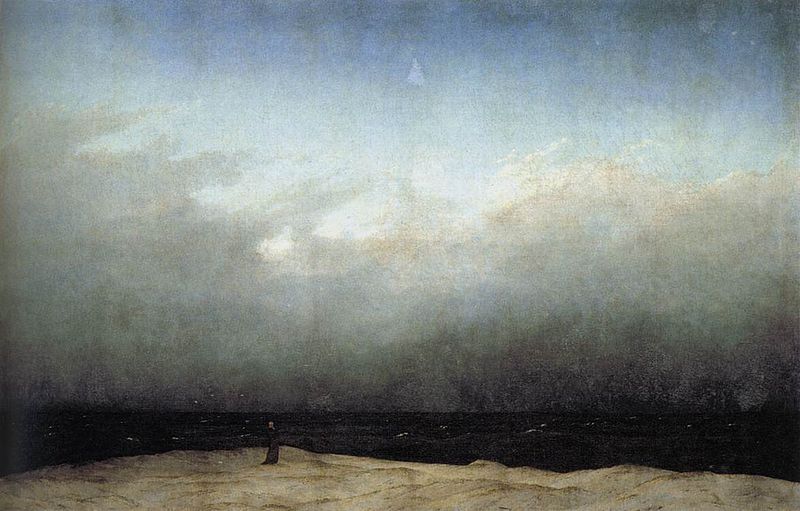File:Monk by the Sea.jpg

Original file (1,174 × 750 pixels, file size: 84 KB, MIME type: image/jpeg)
| This is a file from the Wikimedia Commons. Information from its description page there is shown below. Commons is a freely licensed media file repository. You can help. |
Summary
Licensing
|
This is a faithful photographic reproduction of a two-dimensional, public domain work of art. The work of art itself is in the public domain for the following reason:
The official position taken by the Wikimedia Foundation is that "faithful reproductions of two-dimensional public domain works of art are public domain".
This photographic reproduction is therefore also considered to be in the public domain in the United States. In other jurisdictions, re-use of this content may be restricted; see Reuse of PD-Art photographs for details. | |||||
Captions
Items portrayed in this file
depicts
File history
Click on a date/time to view the file as it appeared at that time.
| Date/Time | Thumbnail | Dimensions | User | Comment | |
|---|---|---|---|---|---|
| current | 19:04, 28 April 2005 |  | 1,174 × 750 (84 KB) | Johann~commonswiki | {{PD}} *1809 Category:Caspar David Friedrich |
File usage
The following 3 pages use this file:
Global file usage
The following other wikis use this file:
- Usage on ja.wikipedia.org
Metadata
This file contains additional information, probably added from the digital camera or scanner used to create or digitize it.
If the file has been modified from its original state, some details may not fully reflect the modified file.
| JPEG file comment | FRIEDRICH, Caspar David
(b. 1774, Greifswald, d. 1840, Dresden) Monk by the Sea 1809 Oil on canvas, 110 x 172 cm Nationalgalerie, Berlin The Cross in the Mountains (The Tetschen Altar) brought Friedrich to the attention of a wider public. Probably at no other point in his life did Friedrich enjoy more profound appreciation and greater admiration than in the years around 1810. Two landscapes in particular were responsible for thrusting Friedrich into the limelight. In 1810 they were exhibited as pendants at the Academy exhibition in Berlin, where they were purchased by the Prussian Crown Prince Frederick William. These two paintings were The Monk by the Sea and the Abbey in the Oakwood. The Monk by the Sea is undoubtedly a masterpiece in Friedrich's oeuvre and the boldest picture within German Romanticism as a whole. The theme: the tiny figure of a man set against a natural landscape divided into three horizontal zones of colour. Its composition breaks with all traditions. There is no longer any perspective depth whatsoever. At the bottom of the picture, the whitish sand dunes making up the narrow strip of shoreline rise at an obtuse angle towards the left. At their apex, the tiny figure of a man robed in black is visible from behind - the only vertical in the picture. There is no other staffage; even the two sailing boats which Friedrich had originally envisaged on either side of the man he subsequently painted over. The oppressively dark zone of the sea meets an extremely low horizon. Some five-sixths of the canvas is given over to the diffuse structure of the cloudy sky. Because all lines lead out of the picture, infinity becomes the true subject of the painting. In the awareness of his smallness, the man, in whose place the viewer is meant to imagine himself, reflects upon the power of the universe. The official recognition, indicated by the royal purchase, came as a surprise, for the canvas had initially been met with bemusement, even from Marie von Kügelgen who had earlier admired his work. When she saw it in 1809, Marie described it to her friend Friederike Volkmann: "A vast endless expanse of sky ... still, no wind, no moon, no storm - indeed a storm would have been some consolation for then one would at least see life and movement somewhere. On the unending sea there is no boat, no ship, not even a sea monster, and in the sand not even a blade of grass, only a few gulls float in the air and make the loneliness even more desolate and horrible."
Author: FRIEDRICH, Caspar David Title: Monk by the Sea Form: painting Time-line: 1801-1850 School: German Type: landscape |
|---|





